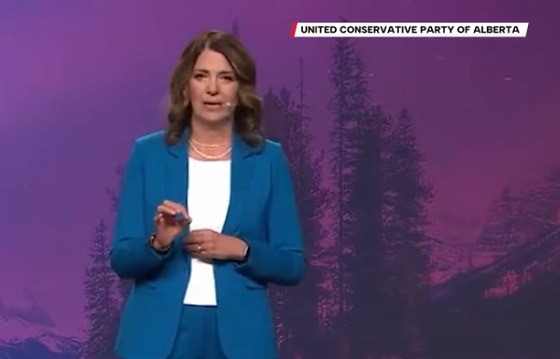Uncategorized
Death toll rises to 22 as tornadoes, severe storms hit South

BEAUREGARD, Ala. — A tornado roared into southeast Alabama and killed at least 22 people and injured several others Sunday, part of a severe storm system that caused catastrophic damage and unleashed other tornadoes around the Southeast.
“We are at 22 right now. Unfortunately, I feel like that number may rise yet again,” Lee County Sheriff Jay Jones said of the death toll.
Drones flying overheard equipped with heat-seeking devices had scanned the area for survivors but the dangerous conditions halted the search late Sunday, Jones said. An intense ground search would resume Monday morning.
Jones said the twister travelled straight down a key local artery in Beauregard and that the path of damage and destruction appeared at least a half mile wide. He said single-family homes and mobile homes were destroyed, adding some homes were reduced to slabs. He had told reporters earlier that several people were taken to hospitals, some with “very serious injuries.”
Lee County Coroner Bill Harris told The Associated Press that he had to call in help from the state, because there were more bodies than his four-person office can handle.
The National Weather Service confirmed late Sunday a tornado with at least an F3 rating and a track at least half a mile (.8 kilometres) wide caused the deadly destruction in Alabama.
Dozens of emergency responders rushed to join search and rescue efforts in hard-hit Lee County after what forecasters said they think was a large tornado touched down Sunday afternoon, unleashed by a powerful storm system that also slashed its way across parts of Georgia, South Carolina and Florida.
Radar and video evidence showed what looked like a large tornado crossing the area near Beauregard shortly after 2 p.m. Sunday, said meteorologist Meredith Wyatt with the Birmingham office of the National Weather Service.
“It appears it stayed on the ground for at least a mile and maybe longer,” Jones told the AP.
After nightfall Sunday, the rain had stopped and pieces of metal debris and tree branches littered roadways in Beauregard. Two sheriff’s vehicles blocked reporters and others from reaching the worst-hit area. Power appeared to be out in many places.
President Donald Trump tweeted late Sunday, “To the great people of Alabama and surrounding areas: Please be careful and safe. … To the families and friends of the victims, and to the injured, God bless you all!”
Rita Smith, spokeswoman for the Lee County Emergency Management Agency, said about 150 first responders had quickly jumped in to efforts to search the debris after the storm struck in Beauregard. At least one trained canine could be seen with search crews as numerous ambulances and emergency vehicles, lights flashing, converged on the area.
No deaths had been reported Sunday evening from storm-damaged Alabama counties outside Lee County, said Gregory Robinson, spokesman for the Alabama Emergency Management Agency. But he said crews were still surveying damage in several counties in the southwestern part of the state.
Numerous tornado warnings were posted across parts of Alabama, Georgia, Florida and South Carolina on Sunday afternoon as the powerful storm system raced across the region. Weather officials said they confirmed other tornadoes around the region by radar alone and would send teams out early Monday to assess those and other storms.
In rural Talbotton, Georgia, about 80 miles (130 kilometres) south of Atlanta, a handful of people were injured by either powerful straight-line winds or a tornado that destroyed several mobile homes and damaged other buildings, said Leigh Ann Erenheim, director of the Talbot County Emergency Management Agency.
Televised broadcast news footage showed smashed buildings with rooftops blown away, cars overturned and debris everywhere. Trees all around had been snapped bare of branches.
“The last check I had was between six and eight injuries,” Erenheim said in a phone interview. “From what I understand it was minor injuries, though one fellow did say his leg might be broken.”
She said searches of damaged homes and structures had turned up no serious injuries or deaths there.
Henry Wilson of the Peach County Emergency Management Agency near Macon in central Georgia said a barn had been destroyed and trees and power poles had been snapped, leaving many in the area without power.
Authorities in southwest Georgia are searching door-to-door in darkened neighbourhoods after a possible tornado touched down in the rural city of Cairo, about 33 miles (53 kilometres) north of Tallahassee, Florida, on Sunday evening. There were no immediate reports of serious injuries.
Authorities said a tornado was confirmed by radar in the Florida Panhandle late Sunday afternoon. A portion of Interstate 10 on the Panhandle was blocked in one direction for a time in Walton County in the aftermath, said Don Harrigan, a meteorologist for the National Weather Service in Tallahassee.
“There’s a squall line moving through the area,” Harrigan told AP. “And when you have a mature line of storms moving into an area where low level winds are very strong, you tend to have tornadoes developing. It’s a favourable environment for tornados.”
The threat of severe weather continued into the late-night hours. A tornado watch was in effect for much of eastern Georgia, including Athens, Augusta and Savannah. The tornado watch also covered a large area of South Carolina, including the cities of Charleston and Columbia.
___
Associated Press writers Russ Bynum in Savannah, Georgia, Bill Cormier in Atlanta, and Ryan Kryska in New York contributed to this report.
Kim Chandler, The Associated Press
Uncategorized
Cost of bureaucracy balloons 80 per cent in 10 years: Public Accounts

The cost of the bureaucracy increased by $6 billion last year, according to newly released numbers in Public Accounts disclosures. The Canadian Taxpayers Federation is calling on Prime Minister Mark Carney to immediately shrink the bureaucracy.
“The Public Accounts show the cost of the federal bureaucracy is out of control,” said Franco Terrazzano, CTF Federal Director. “Tinkering around the edges won’t cut it, Carney needs to take urgent action to shrink the bloated federal bureaucracy.”
The federal bureaucracy cost taxpayers $71.4 billion in 2024-25, according to the Public Accounts. The cost of the federal bureaucracy increased by $6 billion, or more than nine per cent, over the last year.
The federal bureaucracy cost taxpayers $39.6 billion in 2015-16, according to the Public Accounts. That means the cost of the federal bureaucracy increased 80 per cent over the last 10 years. The government added 99,000 extra bureaucrats between 2015-16 and 2024-25.
Half of Canadians say federal services have gotten worse since 2016, despite the massive increase in the federal bureaucracy, according to a Leger poll.
Not only has the size of the bureaucracy increased, the cost of consultants, contractors and outsourcing has increased as well. The government spent $23.1 billion on “professional and special services” last year, according to the Public Accounts. That’s an 11 per cent increase over the previous year. The government’s spending on professional and special services more than doubled since 2015-16.
“Taxpayers should not be paying way more for in-house government bureaucrats and way more for outside help,” Terrazzano said. “Mere promises to find minor savings in the federal bureaucracy won’t fix Canada’s finances.
“Taxpayers need Carney to take urgent action and significantly cut the number of bureaucrats now.”
Table: Cost of bureaucracy and professional and special services, Public Accounts
| Year | Bureaucracy | Professional and special services |
|
$71,369,677,000 |
$23,145,218,000 |
|
|
$65,326,643,000 |
$20,771,477,000 |
|
|
$56,467,851,000 |
$18,591,373,000 |
|
|
$60,676,243,000 |
$17,511,078,000 |
|
|
$52,984,272,000 |
$14,720,455,000 |
|
|
$46,349,166,000 |
$13,334,341,000 |
|
|
$46,131,628,000 |
$12,940,395,000 |
|
|
$45,262,821,000 |
$12,950,619,000 |
|
|
$38,909,594,000 |
$11,910,257,000 |
|
|
$39,616,656,000 |
$11,082,974,000 |
Uncategorized
Trump Admin Establishing Council To Make Buildings Beautiful Again


From the Daily Caller News Foundation
By Jason Hopkins
The Trump administration is creating a first-of-its-kind task force aimed at ushering in a new “Golden Age” of beautiful infrastructure across the U.S.
The Department of Transportation (DOT) will announce the establishment of the Beautifying Transportation Infrastructure Council (BTIC) on Thursday, the Daily Caller News Foundation exclusively learned. The BTIC seeks to advise Transportation Secretary Sean Duffy on design and policy ideas for key infrastructure projects, including highways, bridges and transit hubs.
“What happened to our country’s proud tradition of building great, big, beautiful things?” Duffy said in a statement shared with the DCNF. “It’s time the design for America’s latest infrastructure projects reflects our nation’s strength, pride, and promise.”
“We’re engaging the best and brightest minds in architectural design and engineering to make beautiful structures that move you and bring about a new Golden Age of Transportation,” Duffy continued.
Mini scoop – here is the DOT’s rollout of its Beautifying Transportation Infrastructure Council, which will be tasked with making our buildings beautiful again. pic.twitter.com/
9iV2xSxdJM — Jason Hopkins (@jasonhopkinsdc) October 23, 2025
The DOT is encouraging nominations of the country’s best architects, urban planners, artists and others to serve on the council, according to the department. While ensuring that efficiency and safety remain a top priority, the BTIC will provide guidance on projects that “enhance” public areas and develop aesthetic performance metrics.
The new council aligns with an executive order signed by President Donald Trump in August 2025 regarding infrastructure. The “Making Federal Architecture Beautiful Again” order calls for federal public buildings in the country to “respect regional architectural heritage” and aims to prevent federal construction projects from using modernist and brutalist architecture styles, instead returning to a classical style.
“The Founders, in line with great societies before them, attached great importance to Federal civic architecture,” Trump’s order stated. “They wanted America’s public buildings to inspire the American people and encourage civic virtue.”
“President George Washington and Secretary of State Thomas Jefferson consciously modeled the most important buildings in Washington, D.C., on the classical architecture of ancient Athens and Rome,” the order continued. “Because of their proven ability to meet these requirements, classical and traditional architecture are preferred modes of architectural design.”
The DOT invested millions in major infrastructure projects since Trump’s return to the White House. Duffy announced in August a $43 million transformation initiative of the New York Penn Station in New York City and in September unveiledmajor progress in the rehabilitation and modernization of Washington Union Station in Washington, D.C.
The BTIC will comprise up to 11 members who will serve two-year terms, with the chance to be reappointed, according to the DOT. The task force will meet biannually. The deadline for nominations will end Nov. 21.
-

 Alberta2 days ago
Alberta2 days agoNet Zero goal is a fundamental flaw in the Ottawa-Alberta MOU
-

 Food2 days ago
Food2 days agoCanada Still Serves Up Food Dyes The FDA Has Banned
-

 COVID-192 days ago
COVID-192 days agoThe dangers of mRNA vaccines explained by Dr. John Campbell
-

 Addictions2 days ago
Addictions2 days agoManitoba Is Doubling Down On A Failed Drug Policy
-

 Alberta2 days ago
Alberta2 days agoKeynote address of Premier Danielle Smith at 2025 UCP AGM
-

 Artificial Intelligence1 day ago
Artificial Intelligence1 day ago‘Trouble in Toyland’ report sounds alarm on AI toys
-

 COVID-192 days ago
COVID-192 days agoFDA says COVID shots ‘killed’ at least 10 children, promises new vaccine safeguards
-

 National20 hours ago
National20 hours agoMedia bound to pay the price for selling their freedom to (selectively) offend










